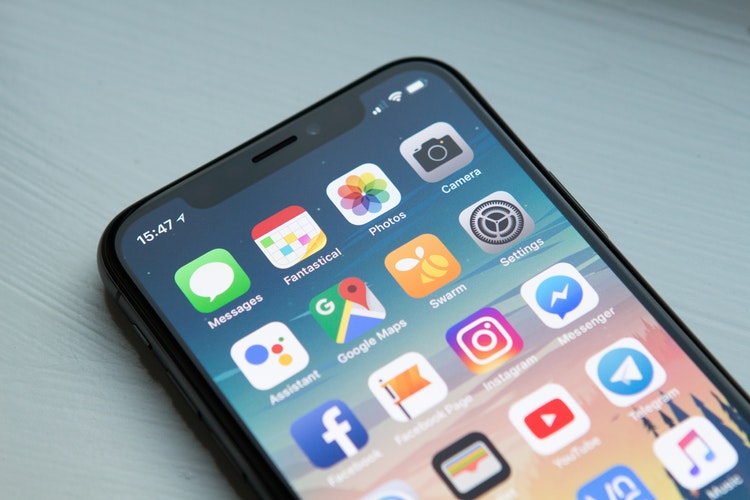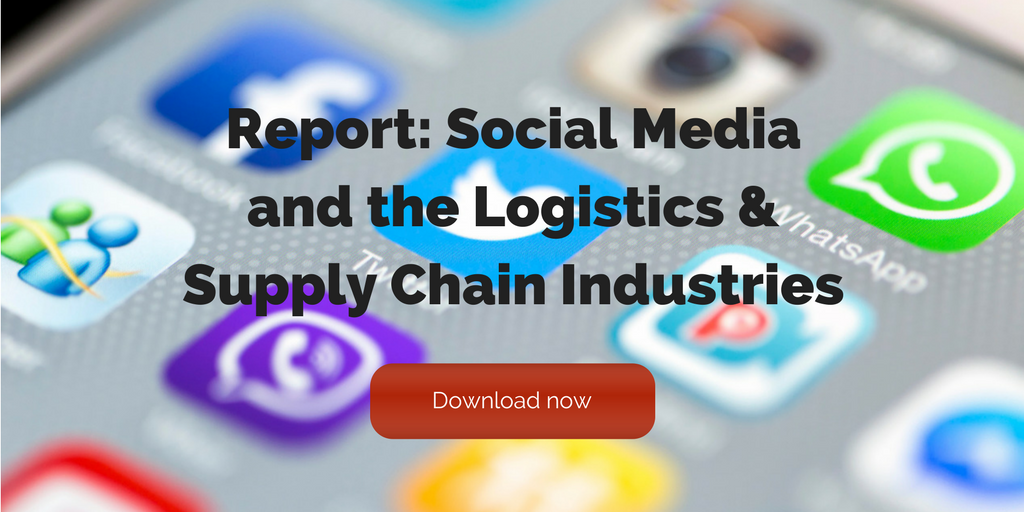
by Fronetics | Jul 17, 2018 | Blog, Content Marketing, Logistics, Marketing, Strategy, Supply Chain
The first step in an effective lead generation campaign is creating valuable offers to convince website visitors to entrust you with their contact information.
Welcome to part one of my series on effective lead generation.
In this four-part series, I’ll guide you through the four most crucial components of the creating an effective lead-generation and lead-nurturing campaign. And I’ll help you tailor your strategic marketing objectives to generate a high volume of quality leads.
Today, we’re looking at how to create valuable offers, the first step in converting a website visitor into a lead.
Offering value
To generate a lead, you need to convince visitors on your website to give you their contact information — and this takes work. You can’t simply expect them to generously hand over their personal information. (Don’t we all get enough emails?!) This means you need to tempt them with something they really want, which you give them in exchange for their contact info.
You may be asking, what will my audience find valuable? And this is where your content comes into play.
[bctt tweet=”Well-written, high-quality content is always more effective at generating leads than an overt sales pitch.” username=”Fronetics”]
One of the fundamental principles of content marketing is that your expertise is just as valuable as your products and services. Well-written, high-quality content is always more effective at generating leads than an overt sales pitch.
Creating valuable offers
When designing your content, keep these three questions in mind:
1. What does my audience need?
It might seem like a basic consideration. But before you jump with both feet into creating an offer, take a step back and really consider the needs of your audience.
This is a good time to check out other industry blogs, social media, and online forums like Quora. What kinds of questions are your prospective buyers asking? What problems are they facing, and how can you help them?
2. How do I best serve the information I’m presenting?
Once you have a clear, well-researched idea of what your audience needs, think about what format best serves the content you’ll be offering them.
Depending on how your information should be structured, valuable content offers could be industry reports, guides, infographics, free consultations, product demonstrations, discounts, or webinars. You’ll often find that you can repurpose your existing content into an exclusive new, valuable offer.
3. How do I let my audience know that my offer is valuable?
So you’ve figured out what your audience needs, and created and structured a content offer to meet that need. Now it’s time to let your audience in on the secret.
The higher the perceived value of an offer, the more irresistible it becomes. And a big part of what we perceive to be valuable is about exclusivity and high demand.
To create this feeling of exclusivity and demand, use elements like:
- Limited-time offers
- Limited quantities
- X number of people have seized this offer
- Content that matches current trending topics
- A title that hooks interest
When you create an offer that your target audience perceives as truly valuable, your lead-generation efforts will begin to grow exponentially.
What tips do you have for creating valuable offers? Want to learn more about the crucial components of the creating an effective lead-generation and lead-nurturing campaign? Here’s the rest of the posts in our series:
Related posts:


by Fronetics | Jul 11, 2018 | Blog, Logistics, Supply Chain
Here are 10 mobile apps for supply chain professionals to get out from behind their desk, streamlining processes right from a phone.
In an industry focused on the transport of products and goods, mobile apps are giving supply chain professionals a new freedom from the confines of their desks. The need for real-time data, remote management, and on-the-go decision-making has never been greater.
Gone are the days of the costly, rugged devices that managed warehouse and transport operations over a decade ago. With improved technology and updated applications, these devices have become irrelevant, as supply chain and logistics professionals find these services right in the palm of their hands, and at a much lower price point.
Key benefits of mobile apps in supply chain management
Cost isn’t the only driver behind the increased popularity of phone apps. Other benefits include:
- Real-time updates for better inventory and operational control
- Enhanced portability for on-the-move management
- Precision monitoring of supply chain processes
- Increased efficiency and productivity
- Improved customer service through faster response times
Here are 10 apps for supply chain professionals to be familiar with. Each individual app offers unique solutions to supply chain and logistics processes.
10 mobile applications for the supply chain professional
Logistimo enables anyone to easily manage supply chain and logistics in rural, emerging markets. If you are a retailer, distributor, transporter, or agent, Logistimo can help you get real-time visibility of your inventory and orders, while easily reporting on sales, purchases, and demand information using the mobile application.
Mobile SCM aids in controlling the trade and logistics processes while cutting down on cost. This app can help contribute to your business ROI by monitoring stock movement from the warehouse, customer shipments, and inventory reconciliation.
The LINK application contains features that manage the shipment of ordered goods and generate reports through push notifications, even if the phone is offline. Apart from monitoring, the application aids accessing shipment documents, finalizing the delivery process, and evaluating the overall quality of the service on delivery.
Scandit is an application that enhances the inventory process with an innovative barcode scanning technology. It provides customers with a user-friendly, branded mobile application that puts an entire product catalog at their fingertips. Distributors and vendors can increase order frequency and drive customer loyalty with cross-platform capabilities.
The EazyStock Mobile App gives instant access to everything you need from your ERP system data while you are on the go. EazyStock features powerful inventory dashboards and reports to extend senior leaders, financial controllers, and purchasing managers a 360-degree view of the inventory they carry.
The ServiceMax Field Service App is developed to improve field productivity with any device. Designed from the ground up with field technicians and engineers in mind, it provides a refined interface, consistent access and targeted service workflows. The app offers a range of services from field service contracts, order management, workforce optimization, parts management, social media customer monitoring, customer communities, and analytics.
Kintone’s flexible, cloud-based tools offer robust supply chain management solutions for better, smarter workflows. With customizable inventory tools and low-code/no-code development options, users can make this app work for their specific needs on all their devices.
Halo is a collaborative, scalable application helping you accurately measure supply chain performance and make decisions that benefit your bottom line. It offers advanced analytics for better decisions, integrated data quality controls, and complete visibility into your operations.
StockIQ is an application design to track and monitor your warehouse inventory. It will suggest grouped transfers to help you efficiently re-balance your inventory while offering a supplier management module that allows you to use lead times calculated from actual receipt history.
TrackVia’s fully customizable supply chain software eliminates manual, paper, or spreadsheet-based workflows and provides you with access to real-time reporting and actionable insights on your key SCM operations. Use TrackVia to streamline processes gaining greater control and visibility around all of your supply chain management processes with web and mobile applications, tailored to fit your unique needs.
By leveraging these cutting-edge mobile applications, supply chain professionals can enhance their operational efficiency, make data-driven decisions, and stay competitive in an ever-evolving industry landscape. Remember, the key to maximizing the benefits of these apps lies in selecting the ones that best align with your specific supply chain needs and integrating them effectively into your existing processes.
What mobile apps for supply chain pros do you recommend?
Related posts:


by Fronetics | Jul 9, 2018 | Blog, Content Marketing, Logistics, Marketing, Social Media, Supply Chain
Here are our most-viewed supply chain and logistics blog posts from this year as of July 1, 2018.
Throughout the year, we regularly write blog posts to help our readers stay on top of the latest news and happenings in the supply chain and logistics industries, particularly in regards to content marketing. We hope these posts provide insight, tips, and insider information on how to stay head of your competitors with the consistent publication of quality content.
We’ve covered some great stuff this year, from new trends (like chatbots) to questions that clients ask year after year (like how is the industry using social media?). Here’s a look at our most popular posts so far this year.
Top supply chain and logistics blog posts from 2018 (so far)
1. 10 Must-Follow Supply Chain and Logistics Blogs in 2018
These 10 blogs are all rich with industry news and the latest trends to keep you in the know. They cover a wide range of topics, from research to strategy, and feature some of the top thought leaders in the field. Read more.
2. 5 Must-Read Books for Supply Chain Leaders
One of the best ways to sharpen your leadership skills is by learning from other leaders’ experiences. Leadership books, especially those focused on the supply chain and logistics industries, give valuable insight into the trials and triumphs of your industry peers’ encounters. Read more.
3. Top 3 Logistics and Supply Chain Blogs of 2018
You voted, and the results are in! LTX Solution is your number one favorite blog of the year, with “Ellen’s Blog” of Women In Trucking and Apex Capital Blog coming in second and third. What remained consistent from previous years is the quality of the content and the consistency of posting by the three winners. Read more.
4. 7 Supply Chain & Logistics Professionals to Follow on LinkedIn
LinkedIn, with almost 500 million users, is the #1 networking site for professionals. Following LinkedIn members gives you access to their profiles, as well as any original or third-party posts they publish on their newsfeeds. Here are 7 supply chain and logistics professionals to follow for top posts and articles in your industry. Read more.
5. B2B Marketing Trend 2018: Influencer Marketing
One of 2018’s fastest growing marketing trends is influencer marketing. Companies will increase their influencer marketing budget to keep up with the competition. 86% of B2C marketers used influencer marketing in 2017, and 92% of marketers that tried it found it to be effective. B2B marketers, on the other hand, have been slower to adopt this new marketing trend. Read more.
6. 6 Reasons Your Supply Chain Employees Are Looking for New Jobs
With the rising demand for professionals in Supply Chain Management and Procurement, there’s a lot of employment activity, especially in short-term contracts. This guest post from Argentus covers the subtler reasons that star performers in these functions get the desire to make a move. It’s not out of a desire for more money as often as you might think. Read more.
7. Drawing Lessons from Tesla’s Supply Chain Issues
A great article last month from CIPS’ industry magazine Supply Management dove into some of Tesla’s Supply Chain woes, discussing how the company, still considered a visionary in the industry, has gotten into some challenges, as well as some optimistic scenarios for how it can get out of it. Read more.
8. Top 10 Social Media Analytics Tools
Analyzing your social media performance is critical to a successful marketing effort, especially in light of recent changes to Facebook’s News Feed. You need the tools to determine what’s working and what isn’t, as well as the best time to post your content for your target audience. Read more.
9. KFC Ran Out of Chicken in the UK: What Supply Chain Lessons Can We Learn?
More than half of the UK’s Kentucky Fried Chicken stores recently closed because they ran out of chicken. A few weeks later, reports are that a number of stores are still closed, with front-line workers being encouraged to take holidays as the company sorts out its deliveries and tries to account for the failures. This guest post from Argentus provides a look at what caused the issues and what supply chain lessons can be learned. Read more.
10. Writing for SEO: Topic Clusters and Pillar Content (NOT Keywords)
I’ve been hinting — more like, emphasizing — in our recent Writing for SEO series that trying to rank for certain keywords in each blog post you publish is a practice on the way out. You may have been wondering what you’re supposed to do instead. This post on topic clusters and pillar content is your answer. Read more.
What supply chain and logistics blog posts have you most enjoyed this year? Are there any topics you’d like us to cover? Please reach out to us and let us know!
Related posts:


by Fronetics | Jun 26, 2018 | Blog, Content Marketing, Logistics, Marketing, Strategy, Supply Chain
More and more supply chain marketers are realizing the benefits of inbound marketing (over outbound marketing) including cost savings and increased lead generation.
Marketers are constantly coming up with new and trendy ways to attract leads. With endless platforms available to us, it can be overwhelming for even the most seasoned marketers to know where they need to focus their efforts.
In order to find the right solutions for your supply chain marketing needs, you first have to understand the difference between inbound and outbound marketing. And more importantly, how they can help — or hinder — your marketing efforts.
Outbound marketing
Outbound marketing describes any marketing approach that pushes a message onto a buyer. Traditional marketing — tv and radio ads, telemarketing, banner and display ads — are all examples of outbound marketing.
Another name for this marketing tactic is interruption marketing, as it typically tries to take “attention away from what your buyer is doing and bring it, forcibly, on to your product or service.”
Inbound marketing
Inbound marketing focuses on audiences finding you. Instead of pushing a message onto buyers, inbound marketing allows you to establish your brand as an industry leader and let interested audiences come to you. This type of marketing attempts to draw in potential customers through interesting and engaging content.
Content marketing is a type of inbound marketing. Examples include blog posts, social media, infographics, white papers, and videos.
Why is inbound marketing better for the supply chain?
Outbound marketing used to be the ‘go to’ for generating leads, but this is simply no longer the case. Marketers across industries have found that inbound marketing has many advantages over traditional marketing practices. In fact, almost three-quarters (68%) of inbound organizations believe their marketing strategy is effective, while more than half (52%) of outbound marketers don’t believe their strategy is effective.
[bctt tweet=”Marketers across industries have found that inbound marketing has many advantages over traditional marketing practices. In fact, almost three-quarters (68%) of inbound organizations believe their marketing strategy is effective.” username=”Fronetics”]
Here’s why we think inbound marketing is better for supply chain marketers than outbound marketing.
Video: Why supply chain marketers need inbound marketing
Related posts:


by Elizabeth Hines | Jun 25, 2018 | Blog, Content Marketing, Logistics, Marketing, Social Media, Strategy, Supply Chain
Aiming to deliver value outside the sales funnel allows your business to build long-term relationships with customers, rather than focusing on a single sale.
Congratulations! You closed the deal. You hammered out the terms and set up the billing. But, according to marketing experts Mark Bonchek and Vivek Bapat, now the real work of growing revenue begins.
Successful 21st century businesses focus on what happens after they close a sale, not the transaction itself. That’s because consumers — and B2B customers — have higher expectations than ever before. They read reviews, listen to webinars, and download white papers before they buy, and they expect a better experience after.
Purchase brands vs. usage brands
Bonchek and Bapat describe two types of brands: “purchase brands” and “usage brands.” The usage brands “focus on the moments of truth that happen after the transaction, whether in delivery, service, education or sharing.” As a result, they command greater loyalty and higher prices than competitive brands that are content to end their relationship with an invoice.
[bctt tweet=”Suppliers need to shift focus from persuading people to buy, to persuading them to become a committed advocate for their brand.” username=”Fronetics”]
What does that mean for you as a supplier? You need to shift your focus from persuading people to buy, to persuading them to become a committed advocate for your brand.
“Be” the B2B customer
B2B accounts are complicated. They have many decision makers and many points of contact. You may have a sales team with multiple reps and sales support people on one account.
With so much going on, it’s important to “be” the customer. Try to identify and understand the people who depend on your product or service to get their work done every day. Those are the people you need to impress.
“What is the likelihood that you would recommend Company X to a friend or colleague?” According to Bain & Company, this is the one question that most closely correlates to customer satisfaction. “High scores on this question correlated strongly with repurchases, referrals and other actions that contribute to a company’s growth.”
And what makes people recommend a product or service? Success while they’re using it.
Social media: An important part of the B2B relationship
Bonchek and Bapat say, “The purchase and usage mindsets are equally, or even more, relevant for B2B brands. Business solutions tend to have longer life cycles than consumer products and there is an even greater opportunity to deliver value outside the sales funnel.“
So yes, you may have to tweet. And stay present on LinkedIn. Because your customers look there to follow trends and find good information to help run their businesses. Industry forums, YouTube, and Instagram are also great places to provide value beyond the sale.
Don’t worry if you’re not a creative genius. Most of us aren’t. Do try to talk about issues that are relevant and maybe even unsettling to your industry. If your customers are having a problem, chances are other businesses have the same concerns and vice versa.
You probably have an opinion, maybe even a solution. Use social media to share it with a larger audience, your users will thank you for it.
How do you deliver value outside the sales funnel?
Related posts:









